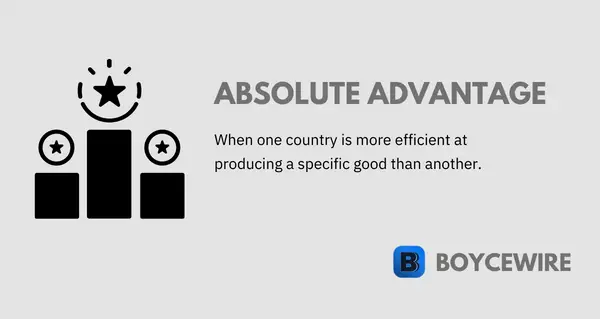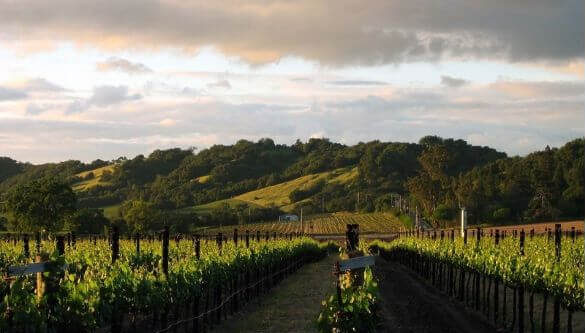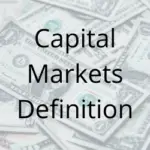Absolute Advantage: Definition & Example

What is Absolute Advantage
Absolute advantage is where a nation is more efficient at making a product than another. In other words, it requires fewer resources to make a final good or service. For instance, Brazil has an absolute advantage in making coffee beans. Due to its location near the equator, climate, and local expertise, it is able to efficiently produce coffee beans: making it the largest producer in the world.
Key Points
- An absolute advantage is where one nation is able to produce a good or service more efficiently than another.
- Quality is an important part of measuring absolute advantage. It can only have the advantage if like for like goods are being compared.
Indonesia is a big producer of coffee beans. However, its quality of coffee beans is said to be inferior to that of Brazil: at least by Western tastes. So there is a quality element that needs to be considered. Even though Indonesia may be able to produce cheaper coffee beans, does not mean it has an absolute advantage.
To put it another way, a nation can only have an absolute advantage if we are comparing like for like products.
Absolute Advantage Example
When a nation has an absolute advantage, it is more efficient at producing the same good, whilst also factoring similar levels of quality. For instance, you can’t compare a cheap knock-off iPhone to an official one.
Let us now look at a real-life example of absolute advantage.
If we look at the production of wine, we find that Italy is the biggest producer, followed closely by France and Spain. Now, when we compare Italy to countries such as Norway, Finland, and the UK, we see that it has an absolute advantage in the production of wine – but why is this the case?

There is no arguing that Italy is better at producing wine than those in colder climates such as Finland – both in quality and quantity. The reason for such is largely due to the climate. Even though it is not impossible to grow grapes in Finland, the cost and effort to do such would make it economically unviable.
Artificial lighting would be required, as well as special fertilizer. To grow grapes and wine in such climates is to fight against nature – which makes such an endeavour costly. With that said, the climate is only one part of Italy’s advantage in producing wine.
“Italy has an absolute advantage in wine production no just because of the climate, but also because of the nations historical ties to its production.”
Even though the Italian climate is perfect for producing wine – the right mix between sunlight and rain – it also has a historical component. It has been producing wine for over 4,000 years, so the experience and knowledge have been passed down for generations. So useful tips on efficiency and production will inevitably flow through into a competitive advantage.
We then have the fact that wine production is simply a favoured profession for many in Italy. In part, this is because of the generational influence – with land being passed on from generation to generation. Yet it is also due to the favourable climate. You can plant grapes almost anywhere in Italy and they will grow – which in turn incentivises farmers.
These three factors – climate, historical influence, and incentives – all come together to help create an absolute advantage for Italian wine production.
Absolute Advantage vs Comparative Advantage
Absolute advantage occurs when one nation is able to produce a good at a lower cost than another nation. By contrast, comparative advantage means that one nation has a lower opportunity cost to produce one good over another. In other words, it is comparatively more efficient when we consider other goods in the equation.
For instance, China may have an absolute advantage in making electronic components. It can produce them at a lower cost than France. However, when we also consider the manufacturing of cars, we may find France actually has a comparative advantage in making electronic components.
If France has to give up FEWER cars to make an electronic component, it has a comparative advantage. That is to say when we compare it to China. So China would have to give up MORE cars in order to make an electronic component.
FAQs
It is the theory that one nation is completely more efficient at making a certain product over another. For example, France is known for its Cheese and Germany for its motor vehicles. These countries have an absolute advantage over others in manufacturing these goods. This is generally because they are able to produce the goods more efficiently and therefore provide at a lower cost.
Absolute advantage is where a nation is completely more efficient than another. By comparison, comparative advantage considers opportunity cost. That is to say one nation is more efficient at making Good A over Good B. For example, Germany might be more efficient at making motor vehicles and televisions than Latvia. However, it is far more efficient at making motor vehicles. Therefore, the nations resources are better placed manufacturing them. By contrast, Latvia may be more efficient at making televisions over motor vehicles – even though it is at an absolute disadvantage over Germany.
An absolute advantage is where one nation is completely more efficient at making a good over another. For example, China is known for its efficient and cheap manufacturing. Many jobs over the years have gone there due to this fact.
A country can benefit from its absolute advantage by exporting its goods or services to other countries and generating revenue from international trade. This can lead to increased economic growth and job creation.
About Paul
Paul Boyce is an economics editor with over 10 years experience in the industry. Currently working as a consultant within the financial services sector, Paul is the CEO and chief editor of BoyceWire. He has written publications for FEE, the Mises Institute, and many others.

Related Topics
Further Reading
 Determinants of Demand - Determinants of demand are the various factors that influence the quantity of a good or service that consumers are willing…
Determinants of Demand - Determinants of demand are the various factors that influence the quantity of a good or service that consumers are willing…  Capital Markets: Definition, Types & Functions - Capital markets are where savers come to invest their capital in long term investments such as corporate debt, equity-backed securities,…
Capital Markets: Definition, Types & Functions - Capital markets are where savers come to invest their capital in long term investments such as corporate debt, equity-backed securities,…  The Multiplier Effect: Definition, Formula & Example - The multiplier effect refers to how an initial injection of money into the circular flow of income can stimulate economic…
The Multiplier Effect: Definition, Formula & Example - The multiplier effect refers to how an initial injection of money into the circular flow of income can stimulate economic… 